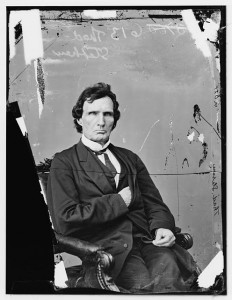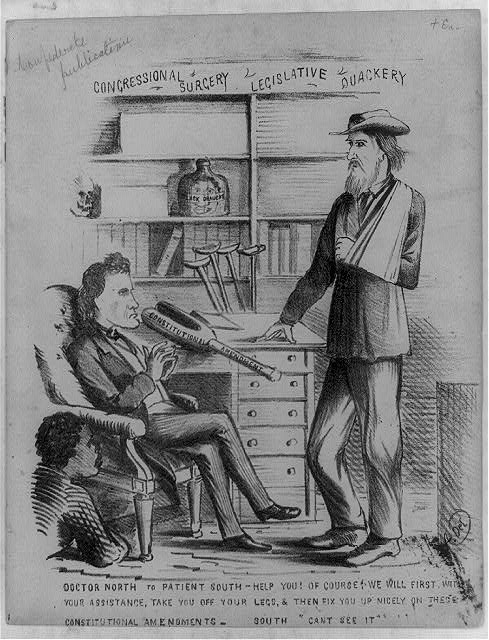From The New-York Times December 8, 1862:
TO THE ASSOCIATED PRESS. … MR. STEVENS’ RESOLUTION. NAVAL ORDERS.
WASHINGTON, Sunday, Dec. 7
…
The resolution of Representative STEVENS, denouncing as guilty of a high crime any person in the Executive or Legislative branch of the Government who shall propose to make peace, or shall accept or advise the acceptance of any such proposition, on any other basis than the integrity and entire unity of the United States and the Territories, as they existed at the time of the rebellion, the consideration of which has been postponed till Tuesday week, will probably be fully discussed, as several members are already preparing to speak upon the subject. This resolution is not supposed to be aimed at the Administration, as its position is known to be that no peace is admissible at the cost of a single acre of the Union.
MR. VALLANDIGHAM’S RESOLUTION.
The resolution of Mr. VALLANDIGHAM, proposing a Convention of the States, and which is pending from the last session, will soon come up for consideration in the House.
Capt. JOHN A. WINSLOW has been ordered to the command of the screw-sloop Kearsage, vice Capt. PICKERING, detached and ordered home.
…
Thaddeus Stevens got right to work in the December 1862 legislative session. I’m not sure how far this resolution went, but by December 8th the House passed Stevens’ Habeas Corpus bill, which sought to make the president non-liable for his suspension of habeas corpus without Congressional approval. After compromise with the senate version of the bill, President Lincoln signed the resulting Habeas Corpus Suspension Act into law on March 3, 1862. The law specifically “authorized the president of the United States to suspend the privilege of the writ of habeas corpus in response to the United States Civil War …”
Here’s a political cartoon featuring Stevens from before the war started. You can read about it at the Library of Congress.


